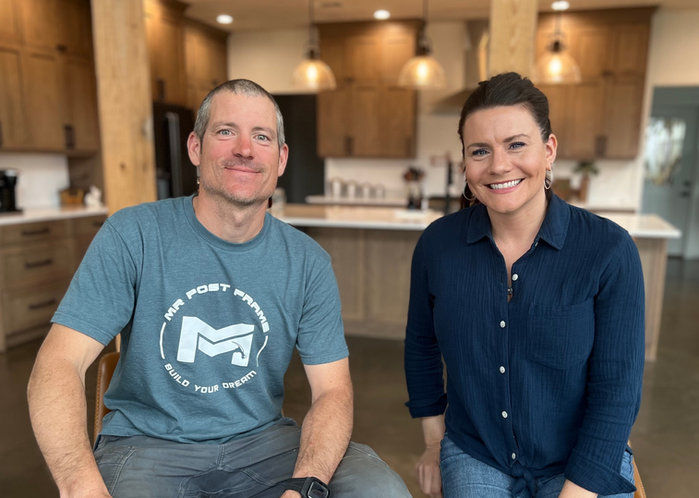Welcome back to the Remington build; this is Episode Three. We're currently waterproofing the ICF forms after pouring concrete. It's been two or three days, and the concrete is dry. I removed everything from the form sides, cleaned off the concrete and spray foam, and now we're applying Polygard, a 650 membrane. I'm cutting it to length, rolling on a primer, and then draping the Polygard over the sides. We'll roll it on with a built-in overlap.

After this, we'll add a corrugated drain membrane to protect against backfilling, rocks, and punctures, allowing water drainage. We're also putting a tile along the base, and I'll include that in this episode. The primer adheres well, and we've finished applying Polygard. Now, we're adding a protective layer to safeguard against rocks during backfilling. This step may not be necessary with good dirt, but our soil has limestone, so we're taking precautions. The cost is reasonable, around $70 per roll.
Next, we've installed drain tile all around, covered it with clean rock, and added a solid drain going out. Now we can backfill, especially in areas where porches will be. We're using clean rock for backfilling to avoid compaction issues, even though it's a bit more expensive. In terms of pouring concrete, we're backfilling the foundation. The weather is favorable, and we're planning to pour footings for the porch soon. I've marked out locations for the posts, considering sliding glass doors and walk doors for access.
After forming everything up, we'll pour concrete tomorrow morning. We're using straw to insulate the footings from the cold, allowing them to cure properly in low temperatures. Straw holds in the heat generated during concrete curing.

Looking ahead, we're preparing for the concrete floor, insulating with vapor barriers, polystyrene, and in-floor heating tubing. The overall plan includes insulation for a thermal break, ensuring efficiency when building on a slab. Unfortunately, we discovered issues with the septic system's pipe alignment, requiring digging up and redoing part of it. Despite this setback, the septic field looks promising, and we'll fix the pipe to ensure proper drainage.
Now, let's dive into more details about the process of pouring concrete and the considerations for the footings and foundation. Pouring concrete is a critical step, and timing is crucial to ensure proper curing and strength. By strategically planning the pouring schedule, considering the temperature and weather conditions, we maximize the effectiveness of the curing process.

Additionally, the choice of materials plays a vital role in the durability and longevity of the foundation. The use of Polygard, a 650 membrane, adds an extra layer of protection against potential water damage. The primer application and careful draping of the Polygard demonstrate a meticulous approach to waterproofing. The incorporation of a corrugated drain membrane is a thoughtful addition to the waterproofing process. This membrane not only shields against backfilling but also provides a safeguard against rocks and punctures. The attention to detail in addressing potential issues reflects a commitment to creating a sturdy and resilient foundation. The decision to use clean rock for backfilling, despite the additional cost, showcases a dedication to long-term stability. Clean rock minimizes the risk of compaction issues, ensuring that the foundation remains solid over time.

As we move forward with the project, the focus on insulation becomes prominent. Insulating the concrete floor with vapor barriers, polystyrene, and in-floor heating tubing is a comprehensive approach to maintaining a comfortable and energy-efficient living space. The inclusion of a thermal break further emphasizes the commitment to energy efficiency, creating a home that is not only structurally sound but also environmentally conscious.
Despite the setback with the septic system's pipe alignment, addressing the issue promptly demonstrates a commitment to quality construction. The decision to dig up and redo part of the septic system ensures that drainage functions optimally, preventing potential issues in the future.
In conclusion, the Remington build is progressing with a meticulous and thoughtful approach to each phase of construction. From waterproofing and backfilling to concrete pouring and insulation, every step is undertaken with an eye for detail and a commitment to creating a durable and energy-efficient home. Stay tuned for the next update as we move closer to the framing phase.
Thank you,
MR Post Frame

Patreon Group:
Interested in tackling your build on your own? If you want to explore the possibility of being your GC or self-building, our Patreon membership is for you! It's a community of like-minded people offering support, discounts, Q/A, and more.